Welcome, dear travelers! Rome is home to iconic sights such as the Colosseum and the Vatican, but the real star of the city is the food. We’re talking about tasty, heart-warming dishes that have been perfected over generations, and every bite tells a story of tradition and flavor of Italian cooking.
However, we also have to tell you that Rome is an absolute tourist destination, so it’s not easy at all to find the truly authentic restaurants with a good price-performance ratio.
But fear not! We’ve put together a delicious guide to the 10 best local dishes in Rome, along with the best places to enjoy them.

In Rome, food is a way of life, and our article is your ultimate guide to mastering it. Look forward to dishes like pasta carbonara, where creamy egg, crispy pancetta and pecorino cheese come together in a symphony of flavors. Fancy something a little lighter? Try the famous Pizza Romana, a simple but divine creation made with olive oil, salt and rosemary. And don’t forget the delicious crunch of deep-fried artichokes, one of Roman classics that will leave you wanting more. So go ahead and prepare your taste buds for a culinary journey through the heart of the Eternal City.
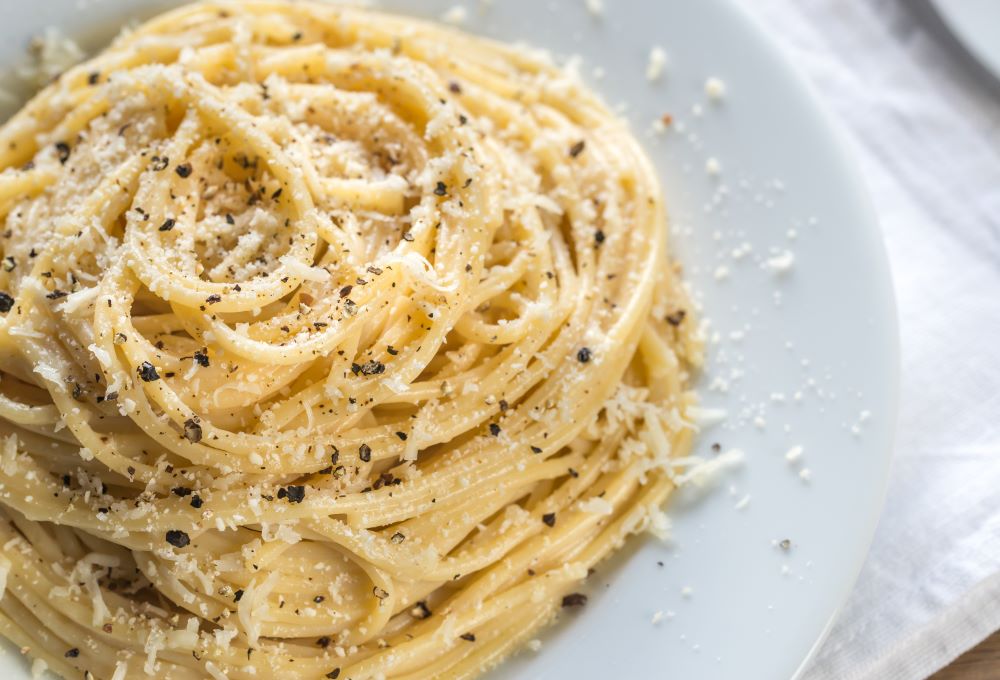
The first item on our culinary journey through Rome is the timeless classic: spaghetti cacio e pepe. This true Roman version of the recipe may sound simple with just three ingredients – pasta, pecorino romano and black pepper – but trust me, the taste is anything but. Imagine perfectly al dente spaghetti coated in a creamy, peppery sauce that is as rich in tradition as it is in flavor. So get ready for a taste explosion that will have you longing for a second plate before you’ve even finished the first.
Where to eat? Grappolo d’Oro, Piazza della Cancelleria 80

Pasta carbonara, the undisputed star of Roman food. This iconic dish is a true explosion of flavors that never fails to delight. Imagine perfectly al dente spaghetti topped with crispy pancetta, egg yolks and a generous shower of local Pecorino cheese.
The origins of pasta carbonara are a matter of mystery and controversy, and there are countless stories attesting to its true origins. Some claim it originated in the Roman coal mines, where hungry workers combined it with eggs, cheese and cured pork to create a hearty dish. Others believe it was inspired by American soldiers who introduced the locals to bacon and eggs during the liberation of Italy in World War II.
Regardless of its dark past, one thing is certain: pasta carbonara has won a permanent place in the hearts (and stomachs) of Romans and visitors alike. For this special dish, we present two traditional Roman trattoria. Buon appetito!
Where to eat? Checco Er Carettiere, Via Benedetta, 10

Trippa alla Romana is deeply rooted in Rome’s culinary tradition and reflects the city’s history of ingenuity and frugality. The main ingredient, trippa, refers to the cow’s stomach. In ancient Rome and times of scarcity, people creatively transformed this humble ingredient into a tasty and nutritious dish.
The exact origins of trippa alla Romana are not well documented, but it is thought to have become a popular dish among the Roman working class, particularly in the Trastevere district. With simple ingredients such as tripe, tomatoes, onions, herbs and grated Pecorino Romano, trippa alla Romana became a staple dish for many Roman families. Today, it can be found on the menus of traditional Roman trattorias and restaurants, where it continues to be appreciated for its hearty flavor and cultural significance.
Where to eat? Mordi & Vai, Nuovo Mercato Comunale di Testaccio, Via Beniamino Franklin, 12
Try!
Coda alla Vaccinara
Tip: If you are in the mood to try more special, but traditional and savory dishes, then we recommend: Coda alla Vaccinara. The oxtail stew is another typical Roman dish with a long history. This hearty stew originates from the community of “vaccinari” (butchers) in Rome and was traditionally made from the oxtails discarded by wealthier households. To prepare Coda alla Vaccinara, the oxtails are slowly braised with tomatoes, celery, carrots, onions and a mixture of aromatic herbs. Raisins, pine nuts and cocoa powder are often added to increase the complexity of the dish and create a harmonious balance of sweet and savory notes.
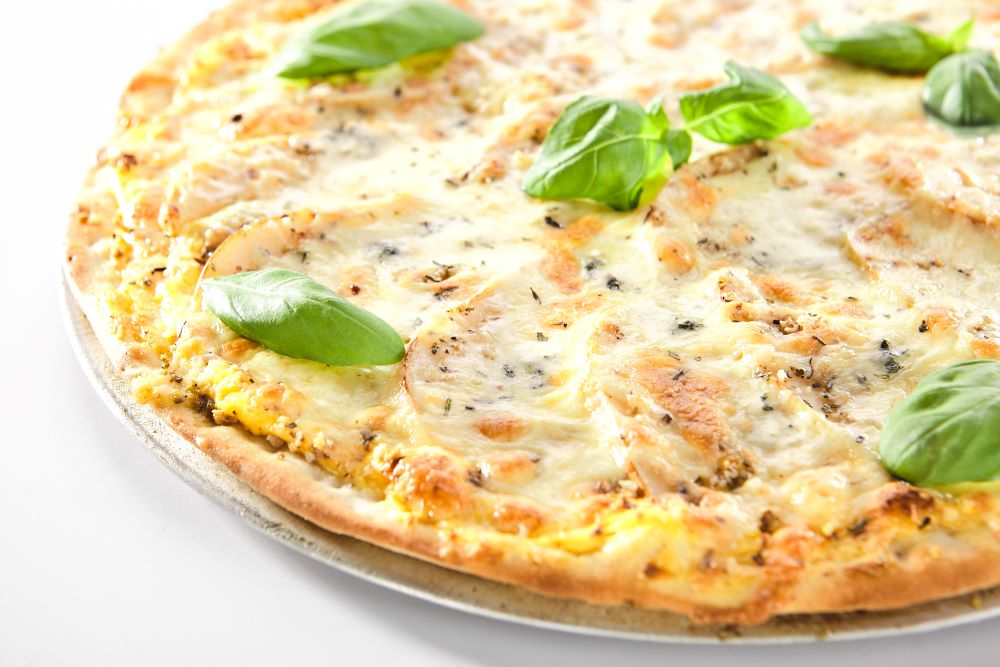
Pizza Bianca, also known as “white pizza”, is a simple but sublime creation. It is characterized by its airy, focaccia-like crust, which is brushed with olive oil and sprinkled with coarse salt before baking. The result is a tender, slightly crispy base that provides the perfect foundation for a variety of toppings. From fresh rosemary and sea salt to thinly sliced mortadella or prosciutto – this Pizza can be enjoyed in countless delicious variations.
Where to eat? L’Arte Bianca, Via di Donna Olimpia, 188
Tip: Pizza al taglio, or “pizza by the slice”, is a popular street food for hungry locals and tourists to take away. This type of pizza is baked in large rectangular trays and has a thicker, firmer crust that is perfect for a variety of toppings.
You can’t visit Rome and not try Trapizzino, a delicious combination of traditional Roman flavors and modern street food innovation. Created in 2008 by Roman pizzaiolo Stefano Callegari, Trapizzino quickly became a sensation in the Eternal City.
Imagine a triangular slice of pizza bianca, a soft and fluffy Roman-style bread topped to the brim with tasty fillings inspired by classic Roman dishes. From tender braised oxtail to savory meatballs in tomato sauce and creamy chicken cacciatore, the Trapizzino offers a tantalizing array of options to satisfy every craving.
Where to eat? Mercato Centrale, Via Giovanni Giolitti, 36

The next stop on our culinary journey of discovery through Rome is the delicious maritozzo. Imagine biting into a buttery, slightly sweet roll generously filled with whipped cream. This treat has been tempting Roman taste buds for centuries and dates back to ancient times. Originally enjoyed as a humble breakfast snack, today the maritozzo has evolved into a popular dessert.
Try!
Il Maritozzo Rosso, Vicolo del Cedro, 26

Let’s move straight on to Roman street food, Supplì. Sometimes called supplì al telefono, these delicious fried rice balls are usually made from leftover risotto, shaped into small balls and filled with a tasty mixture of mozzarella and sometimes a touch of tomato sauce. The result is a crispy exterior that gives way to a gooey, cheesy center that is bursting with flavor.
Legend has it that the name “supplì” comes from the French word for “surprise”, because when you bite into these rice croquettes, you discover a hidden treasure of melted cheese. Delicious!
So if you’re strolling through the streets of the Italian capital and craving something truly authentic, be sure to visit a local supplì vendor and try these irresistible delicacies.
Where to eat? Supplì Roma, Via di S. Francesco a Ripa, 137
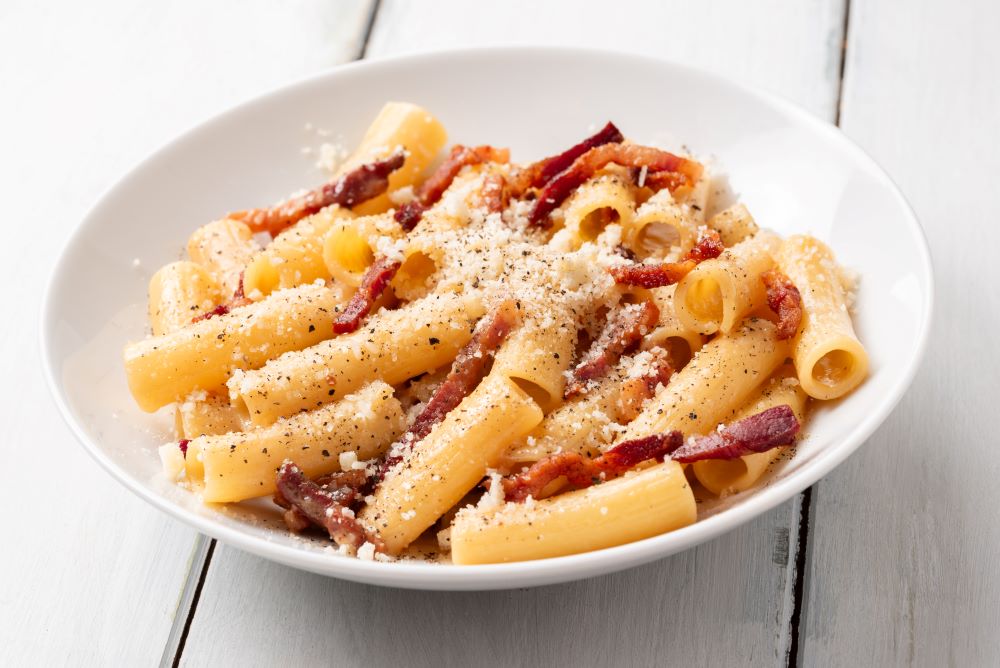
Here is another of the roman classic iconic pasta dishes that is prepared very similarly to carbonara or amatriciana, but without the tomato and egg yolk.
We are talking about pasta alla gricia. In this simple, easy favorite, the pasta is mixed with guanciale (cured pork jowl), Pecorino Romano, black pepper and a little pasta cooking water to create a creamy sauce.
Pasta alla Gricia, whose origins go back to the shepherds in the Apennines, embodies the essence of cucina povera, the “poor man’s kitchen”, in which simple ingredients are transformed into culinary delights. Legend has it that the shepherds prepared this dish from ingredients they had to hand: cured pork, mature cheese and pasta.
Even today, pasta alla Gricia is still one of the most popular pasta dishes in Roman trattorias, appreciated for its rich flavors and simplicity. Whether as a quick lunch or a leisurely dinner, this timeless dish offers a taste of authentic Roman cuisine.
Where to eat? Osteria Bonelli, Viale dell’Acquedotto Alessandrino, 172/174
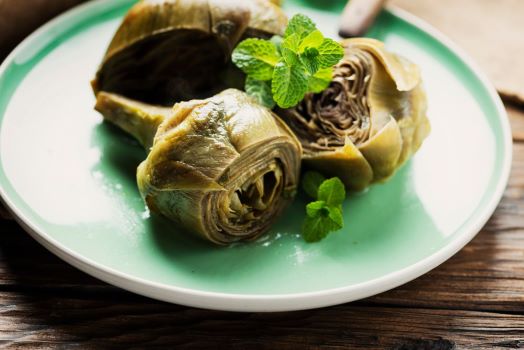
Let us now turn to the world of artichokes with two typical Roman preparations: Carciofi alla Romana and Carciofi alla Giudia.
Carciofi alla Romana, or Roman artichokes, are a hearty delight. Imagine tender artichoke hearts gently cooked with fresh mint, garlic and olive oil until they melt in your mouth. A dish that reflects the rustic simplicity of Roman cuisine and brings out the natural flavors of this popular vegetable.
Carciofi alla Giudia or Jewish-style artichokes, on the other hand, are crispier and more indulgent. Here, the artichokes are deep-fried to golden perfection, so that the crispy exterior gives way to a tender, flavorful core. Sprinkled with a touch of salt and served with a lemon wedge, it is a culinary masterpiece that is famous in Rome’s historic Jewish quarter.
Where to eat? Taverna Volpetti, Via Alessandro Volta, 8
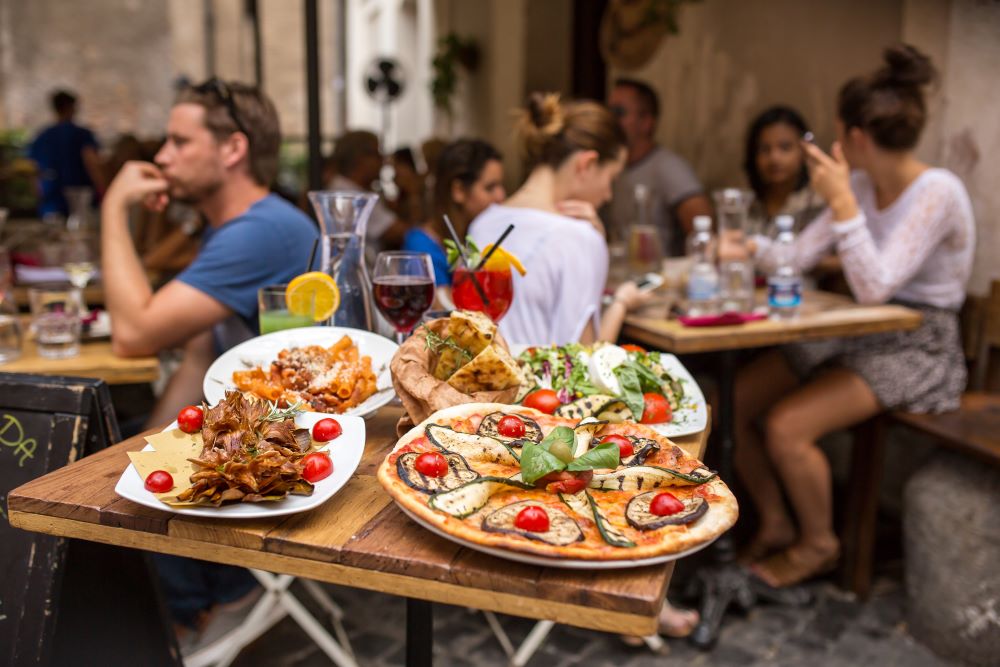
Rome may be known for its hearty meat dishes, but for those looking for a vegetarian culinary experience, the city also offers a number of delicious options.
One such dish is Carciofi alla Romana, Roman-style artichokes, in which tender artichoke hearts are gently cooked with fresh mint, garlic and olive oil until they melt in the mouth. It’s a vegetarian delight that brings out the flavors of seasonal vegetables in a simple but delicious preparation.
Another popular vegetarian option is Pasta e Ceci, a comforting pasta and chickpea soup that is hearty, nutritious and full of flavor. Based on aromatic vegetables, tomatoes and chickpeas, this dish with al dente pasta makes for a filling meal that is perfect for chilly Roman evenings.
Rome also has an abundance of fresh salads with locally sourced ingredients, such as ripe tomatoes, crunchy cucumbers, peppery rocket and creamy buffalo mozzarella. Drizzled with extra virgin olive oil and balsamic vinegar, these salads are a refreshing and healthy option for vegetarians who want to enjoy the taste of Italian cuisine.
Where to eat? Mater Terrae, Largo Febo, 2